Specialty cookware for baking bread at home includes Dutch ovens, baking stones, and loaf pans. These tools enhance heat distribution and moisture retention for perfect loaves.
Baking bread at home can be a rewarding experience. The right specialty cookware elevates your results, making crusts crispy and interiors soft. A Dutch oven traps steam, creating a bakery-like environment. Baking stones absorb heat, promoting even cooking and crust formation.
Loaf pans provide shape and structure for sandwich breads. Each tool contributes unique benefits, ensuring your homemade bread rivals store-bought varieties. Understanding these options allows you to choose the best cookware for your baking style. With the right equipment, you can enjoy the delightful aroma and taste of freshly baked bread in your kitchen.
The Rise Of Home Baking
Home baking has surged in popularity. Many people enjoy making bread. The pandemic played a big role in this trend. Baking bread became a comforting activity during tough times.
Why Bread Baking Has Become Popular
Several factors have fueled the rise of bread baking:
- Health Awareness: Many seek healthier options. Homemade bread has no preservatives.
- Creativity: Baking allows for personal expression. Each loaf can be unique.
- Cost-Effectiveness: Baking at home saves money. Ingredients are often cheaper than store-bought bread.
- Connection: Baking connects people. Families bond over making bread together.
The Joy Of Homemade Bread
Homemade bread offers joy in many ways:
- Freshness: The smell of baking bread fills the home.
- Taste: Freshly baked bread tastes better than store-bought.
- Customization: Choose your favorite ingredients. Add herbs, seeds, or nuts.
- Skill Development: Baking improves skills. Mastering techniques brings satisfaction.
Investing in specialty cookware enhances the baking experience. Tools like Dutch ovens and bread machines make baking easier.
| Cookware Type | Benefits |
|---|---|
| Dutch Oven | Creates steam for crusty bread. |
| Bread Machine | Mixes and kneads dough automatically. |
| Baking Stone | Provides even heat for perfect crust. |
Essential Bread Baking Tools
Baking bread at home requires specific tools. These tools help create the perfect loaf. Understanding these essentials can improve your baking experience.
Choosing The Right Oven
The oven is crucial for baking bread. A good oven ensures even heat. Here are some tips:
- Convection Ovens: Circulate hot air. They bake bread evenly.
- Regular Ovens: Work well too. Use a baking stone for best results.
- Temperature Control: Ensure your oven reaches the right temperature. Use an oven thermometer for accuracy.
Consider the size of your oven. Larger ovens can bake multiple loaves at once. This is great for family gatherings.
Measuring For Perfection: Scales And Spoons
Accurate measurements are key to baking. Use proper tools to ensure success.
| Tool | Purpose |
|---|---|
| Digital Scale | Measures ingredients precisely. |
| Measuring Cups | For liquids and dry ingredients. |
| Measuring Spoons | Great for small amounts. |
Using a digital scale is best. It gives accurate results. This helps achieve the right texture and flavor.
Always measure flour correctly. Too much can ruin your bread. Follow recipes closely for best outcomes.
Mixing And Kneading Necessities
Creating perfect bread starts with the right mixing and kneading tools. These essentials help develop gluten and enhance flavor. Choosing the right equipment makes bread baking easier and more enjoyable.
Durable Mixing Bowls
Mixing bowls are vital for any bread baker. They come in various materials, sizes, and shapes. Here are some popular types:
| Material | Benefits |
|---|---|
| Stainless Steel | Durable, non-reactive, easy to clean |
| Glass | Non-reactive, allows you to see ingredients |
| Plastic | Lightweight, often with measurement markings |
| Wood | Traditional, adds a rustic touch |
Look for bowls with wide openings. This design helps mix ingredients thoroughly. Choose bowls with a stable base to prevent spills.
Kneading Surfaces And Techniques
A proper kneading surface is essential. It should be sturdy and easy to clean. Here are some options:
- Wooden Cutting Boards
- Marble Slabs
- Silicone Mats
Each surface has its benefits:
- Wooden Cutting Boards: Good for absorbing moisture.
- Marble Slabs: Keep dough cool and firm.
- Silicone Mats: Provide a non-stick surface.
Kneading techniques are crucial for bread texture. Here are some methods:
- Push and fold the dough.
- Use a rocking motion.
- Incorporate air by stretching and folding.
Practice these techniques for better results. Your bread will rise beautifully with the right mixing and kneading methods.
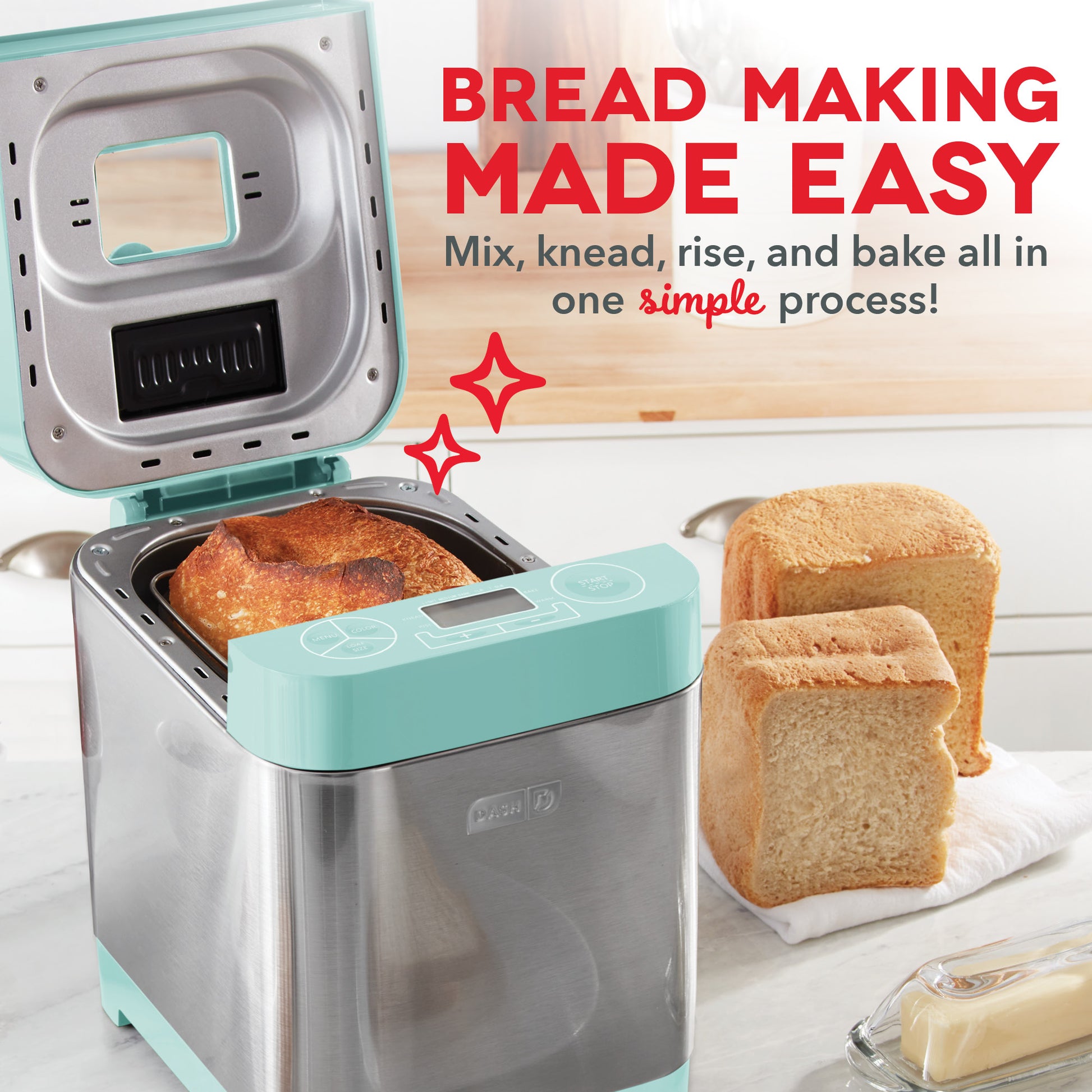
Credit: bydash.com
Bread Pans And Their Varieties
Bread pans play a crucial role in baking. They shape the bread and affect its texture. Understanding the different types helps you choose the right one.
Traditional Loaf Pans
Traditional loaf pans are a staple in every kitchen. They are perfect for making classic bread loaves. These pans come in various materials.
| Material | Benefits |
|---|---|
| Metal | Conducts heat well; produces crisp crusts. |
| Glass | Allows you to see the bread; retains moisture. |
| Silicone | Flexible; easy to remove baked bread. |
Choose a pan based on your baking style. Metal pans are great for crusty bread. Glass pans work well for softer loaves. Silicone pans offer easy clean-up.
Specialty Shapes: Baguettes And More
Specialty bread pans create unique shapes. They add fun to your baking experience. Here are some popular options:
- Baguette Pans: Long and narrow, perfect for French bread.
- Ciabatta Pans: Slightly wider; ideal for rustic bread.
- Focaccia Pans: Shallow with dimples for toppings.
Each type of specialty pan offers different textures. Baguette pans help create a crispy crust. Ciabatta pans allow for airy, open crumbs. Focaccia pans hold toppings well.
Experiment with these specialty shapes. They elevate your baking to a new level. Create beautiful and tasty breads at home.
Proofing Equipment
Creating delicious bread at home starts with the right proofing equipment. This equipment helps your dough rise properly. Proper proofing ensures a great texture and flavor in your bread.
Proofing Baskets Explained
Proofing baskets, or bannetons, support dough as it rises. They come in different shapes and sizes. Most are made from wicker or rattan. This material allows air to circulate, creating a perfect crust.
Here are some key benefits of using proofing baskets:
- Shape retention: Helps keep dough in shape.
- Texture: Creates a beautiful pattern on the crust.
- Moisture control: Absorbs excess moisture.
To use a proofing basket, dust it with flour. Place your shaped dough inside. Cover it with a cloth to prevent drying. Let it rise until it doubles in size.
Creating The Perfect Humidity
Humidity plays a crucial role in bread proofing. Too much or too little can ruin your dough. Here are some easy ways to create the right humidity:
- Use a spray bottle to mist your dough.
- Place a shallow pan of water in the oven.
- Close the door quickly to trap moisture.
Consider using a proofing box. These boxes maintain a consistent temperature and humidity. They are ideal for serious bakers. With the right humidity, your bread will rise beautifully!
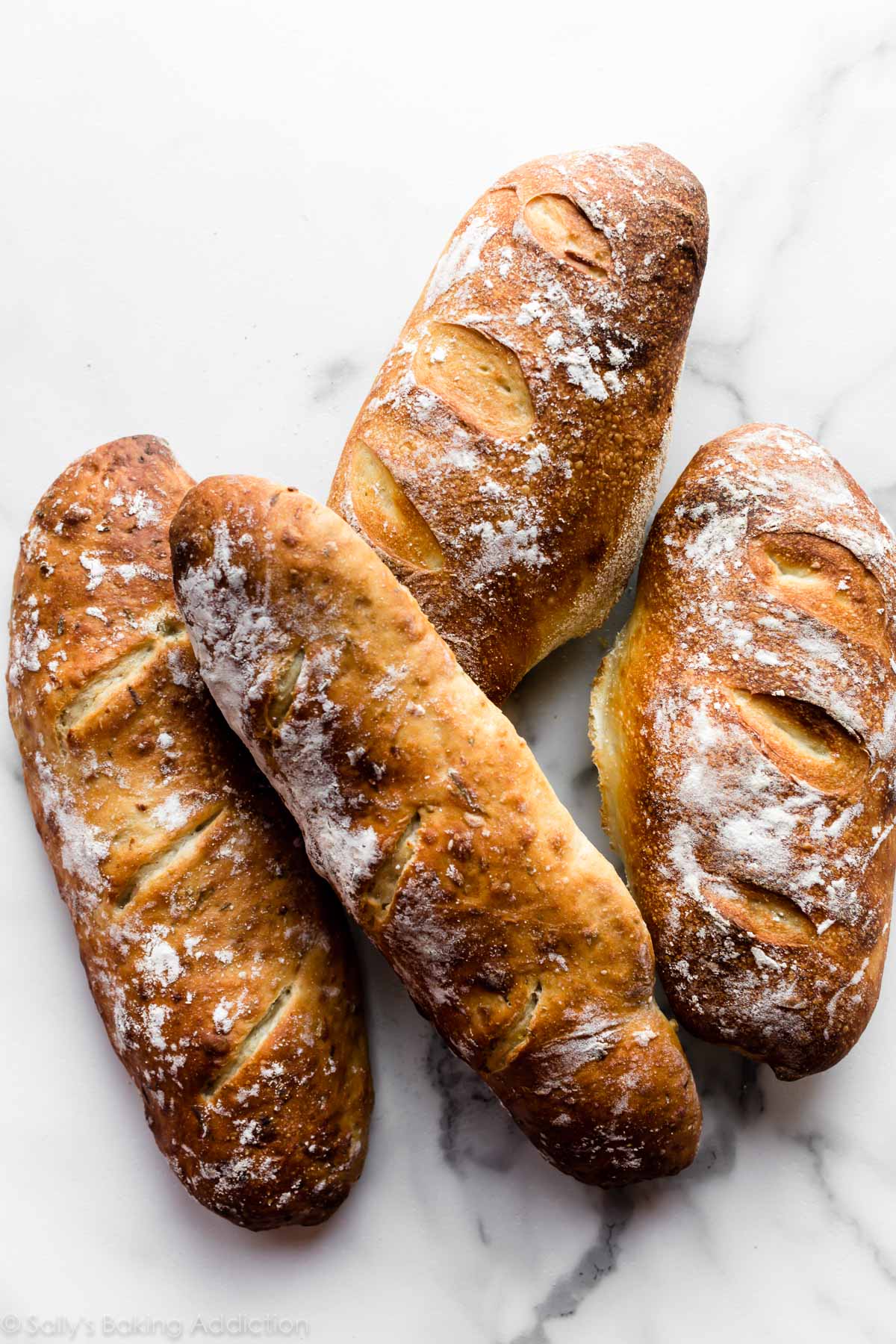
Credit: sallysbakingaddiction.com
Scoring Tools
Scoring tools are essential for home bakers. They help create beautiful designs on bread. These tools allow the dough to expand evenly during baking. A good score also enhances the bread’s flavor and texture.
Lames: A Baker’s Best Friend
Lames are specialized tools for scoring bread. They feature a sharp blade attached to a handle. This design allows for precise cuts on the dough.
- Easy to control
- Adjustable blade angles
- Great for intricate designs
Using a lame gives your bread a professional look. Choose a lame that feels comfortable in your hand. A steady hand creates beautiful patterns.
Scoring Patterns For Artisanal Results
Different scoring patterns can elevate your bread. Here are some popular designs:
| Pattern | Description |
|---|---|
| Simple Cross | A basic design for even expansion. |
| Wheat Sheaf | Creates a natural, rustic look. |
| Sunburst | Radiating lines for a dramatic effect. |
Experiment with these patterns. Your bread will impress family and friends. Each design brings a unique touch to your baking.
The Importance Of Baking Stones And Steels
Baking bread at home requires the right tools. Baking stones and steels play a crucial role. They help create a perfect crust and even baking. Understanding their benefits can elevate your bread-making skills.
Mimicking A Baker’s Oven
Baking stones and steels mimic the conditions of a professional oven. They retain heat and distribute it evenly. This promotes a crisp crust and a soft interior.
- Baking Stones: Made from ceramic or cordierite.
- Baking Steels: Made from solid steel.
Both absorb heat effectively. They release it slowly during baking. This process creates steam, which enhances the bread’s texture.
Maintenance And Care
Taking care of your baking stone or steel is essential. Proper maintenance extends their lifespan. Follow these simple steps:
- Allow cooling before cleaning.
- Use a stiff brush to remove debris.
- Do not use soap on baking stones. It affects flavor.
- Store in a dry place to prevent moisture buildup.
Regular care keeps them in top condition. A well-maintained stone or steel ensures better baking results. Invest time in their upkeep for delicious homemade bread.
Innovative Bread Making Gadgets
Home baking is easier with innovative gadgets. These tools help make perfect bread every time. Enjoy the process and achieve great results with less effort.
High-tech Mixers
Mixing dough is one of the most crucial steps in bread making. High-tech mixers simplify this task. They save time and ensure consistency.
- Powerful Motors: Mixes tough dough with ease.
- Multiple Speed Settings: Control the mixing process.
- Built-in Timers: Track mixing time accurately.
- Attachments: Various tools for kneading, whipping, and more.
These mixers reduce physical effort. They help achieve the right texture in dough. Some popular brands include:
| Brand | Model | Features |
|---|---|---|
| Kitchenaid | Artisan Series 5-Qt | 10 speeds, 67 touchpoints, sturdy design. |
| Breville | Scraper Mixer Pro | Scraper beater, 12 speeds, timer. |
| Hamilton Beach | 6-Speed Stand Mixer | Affordable, compact, versatile. |
Smart Ovens For Consistent Results
Smart ovens take baking to the next level. They offer precise temperature control. This ensures even baking throughout.
- Built-in Thermometers: Monitor internal bread temperature.
- Custom Baking Modes: Pre-set options for different bread types.
- Wi-Fi Connectivity: Control your oven remotely.
- Self-Cleaning Features: Maintain cleanliness effortlessly.
Smart ovens help avoid common baking mistakes. They provide consistent heat for perfect crusts and textures. Some top picks include:
| Brand | Model | Unique Features |
|---|---|---|
| Breville | The Smart Oven Air | Airs fry, dehydrate, and roast. |
| Samsung | Smart Oven with Wi-Fi | Voice control, smart sensing. |
| Panasonic | FlashXpress Toaster Oven | Double infrared heating, compact design. |
Accessorizing Your Bread Baking
Enhance your bread baking experience with the right accessories. Specialty cookware and tools can make baking fun and efficient. They also allow for creativity in your kitchen. Let’s explore some essential items for your bread baking journey.
Functional Aprons
A functional apron is a must-have for any baker. It protects your clothes from flour and dough. Look for aprons made from durable materials. Here are key features to consider:
- Spill Resistance: Choose fabrics that repel stains.
- Pockets: Go for aprons with pockets for tools.
- Adjustable Straps: Find a comfortable fit for long baking sessions.
Consider styles that reflect your personality. Fun prints or classic designs add flair. A well-chosen apron keeps you clean and stylish while baking.
Decorative Bread Stamps
Decorative bread stamps add a personal touch to your loaves. They create beautiful patterns and designs on the crust. Here are some benefits of using bread stamps:
- Unique Presentation: Impress friends and family with stunning bread.
- Creative Expression: Showcase your artistic side.
- Easy to Use: Simply press the stamp onto the dough.
Consider different themes for your stamps. Seasonal designs or playful shapes can enhance your creations. Stamping bread adds fun to your baking routine.
Caring For Your Bread Baking Tools
Caring for your bread baking tools is essential for great results. Proper maintenance enhances their lifespan and performance. Follow these simple tips to keep your tools in top shape.
Cleaning Tips
Cleaning your bread baking tools ensures they remain hygienic and effective. Here are some useful cleaning tips:
- Wooden Tools: Wipe with a damp cloth. Avoid soaking.
- Metal Pans: Use warm soapy water. Rinse well.
- Silicone Molds: Clean with mild soap. Dishwasher safe.
- Cast Iron: Rinse with water. Dry immediately.
Do not use harsh chemicals. They can damage your tools. Always let them dry completely to prevent rust.
Storage Solutions
Storing your baking tools correctly keeps them safe and organized. Use these storage solutions:
- Toolboxes: Ideal for smaller items like spatulas and brushes.
- Cabinets: Store larger items like mixing bowls and pans.
- Hanging Racks: Great for utensils and measuring cups.
Keep items in a dry place. Moisture can cause damage. Label containers for easy access.

Credit: www.amazon.com
Frequently Asked Questions
What Is The Best Cookware For Baking Bread?
The best cookware for baking bread includes a Dutch oven, baking stone, or loaf pan. A Dutch oven creates steam for a crispy crust. Baking stones distribute heat evenly, while loaf pans are great for shaping. Each option enhances texture and flavor in homemade bread.
Do I Need Special Tools For Bread Baking?
While not mandatory, special tools improve the baking experience. Essential tools include a digital scale for precise measurements and a bench scraper for shaping. A thermometer ensures perfect dough temperatures. Investing in these tools can significantly elevate your bread-baking results.
Can I Use Regular Pans For Baking Bread?
Yes, you can use regular pans for baking bread. However, specialty pans, like those made from cast iron or ceramic, offer better heat retention. This results in improved crust and texture. Experimenting with different types can lead to delicious outcomes.
How Do I Choose The Right Bread Pan?
To choose the right bread pan, consider material, size, and shape. Metal pans heat quickly, while glass and ceramic provide even baking. Ensure the pan fits your recipe’s dimensions for optimal results. A non-stick coating can also help with easy bread release.
Conclusion
Baking bread at home can be a rewarding experience. Choosing the right specialty cookware enhances flavor and texture. From Dutch ovens to baking stones, each tool offers unique benefits. Experiment with different options to find what works best for you.
Elevate your baking game and enjoy delicious, homemade bread with ease.
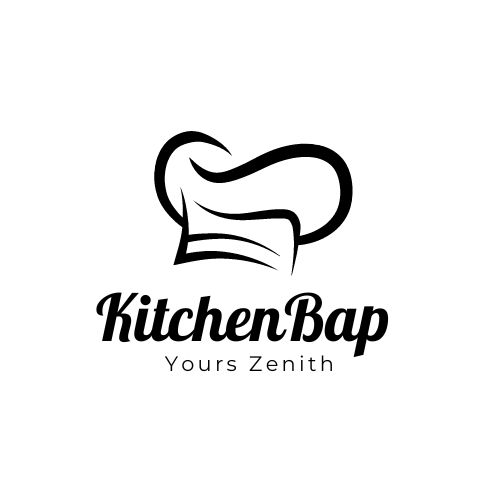

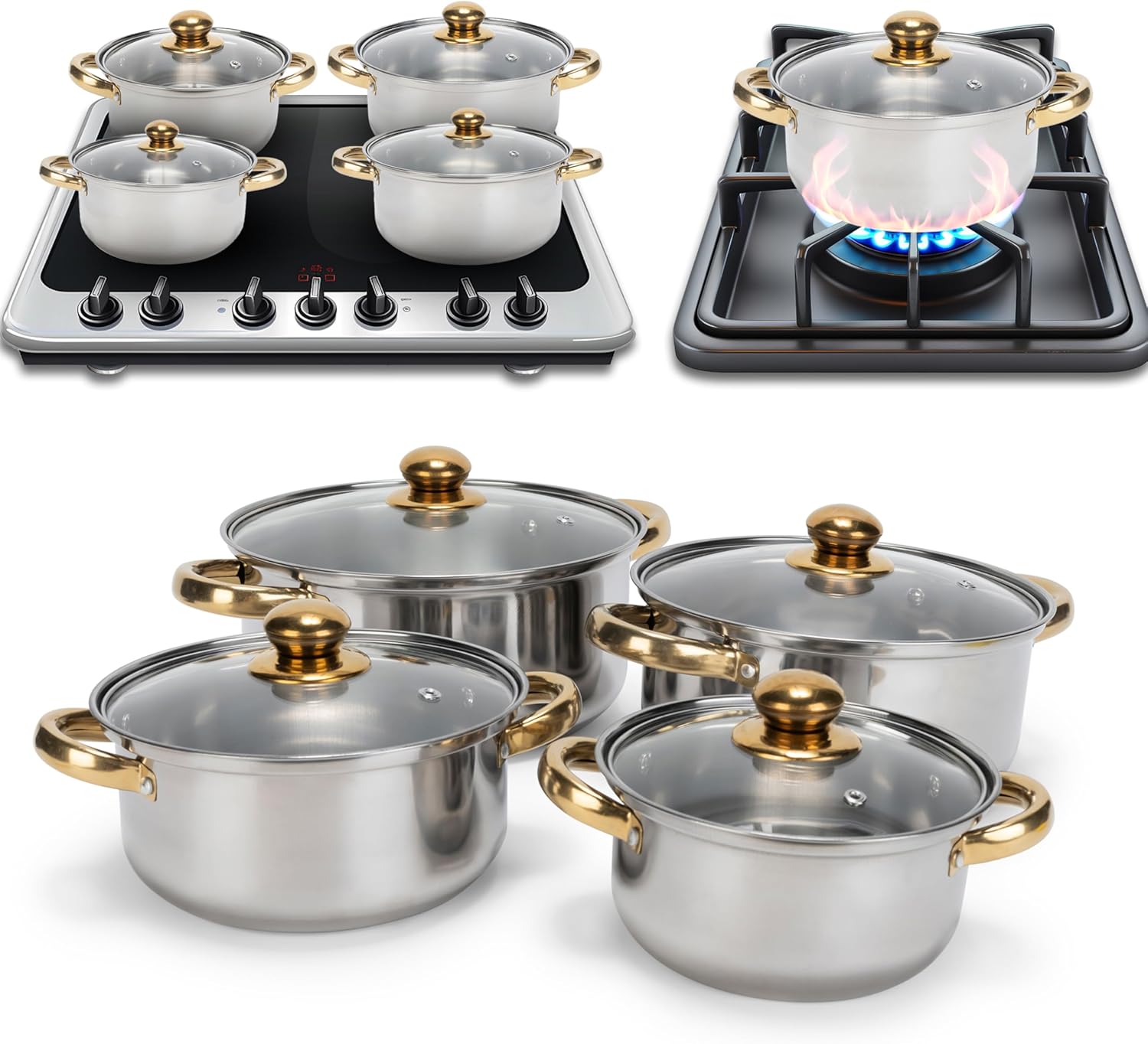

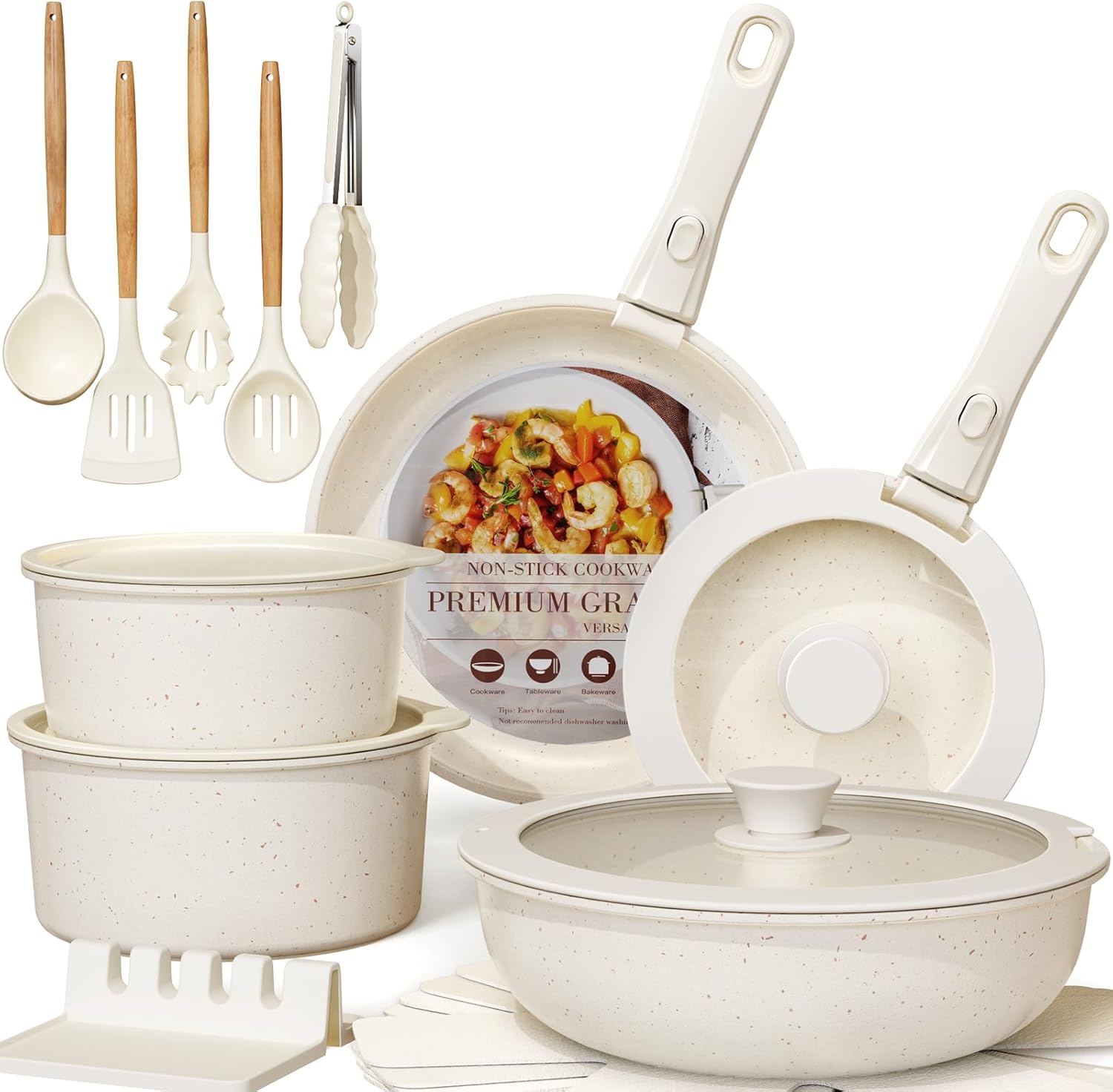
Leave a Reply